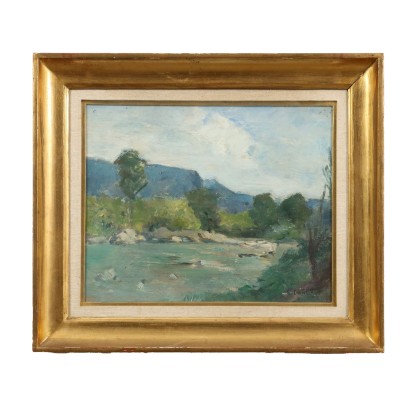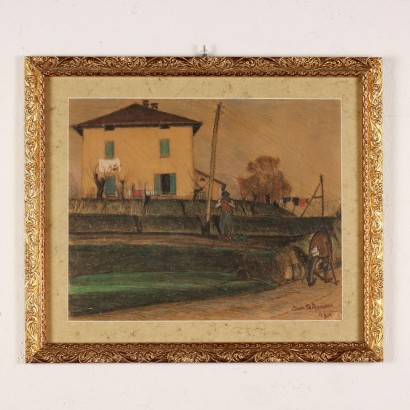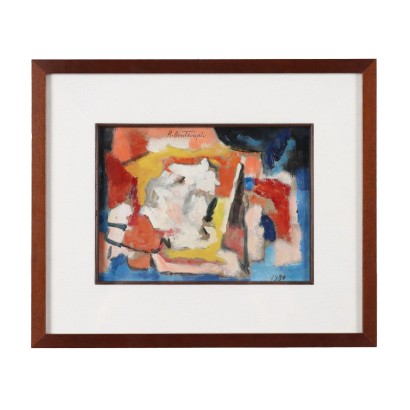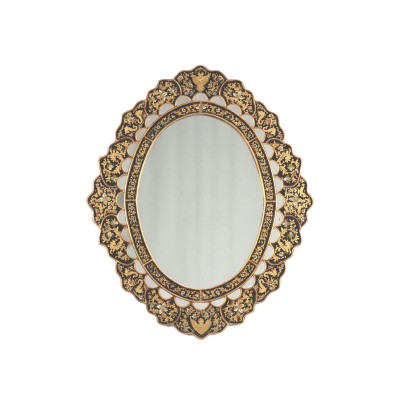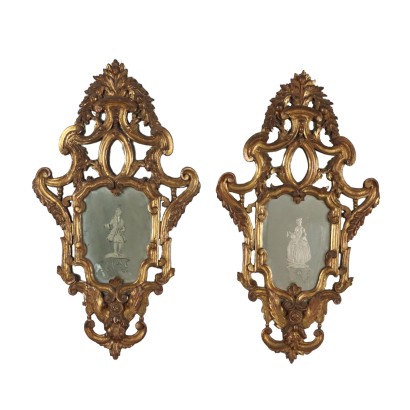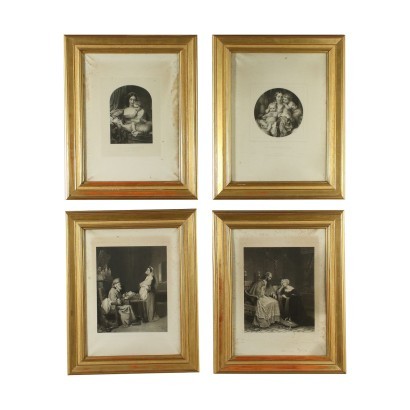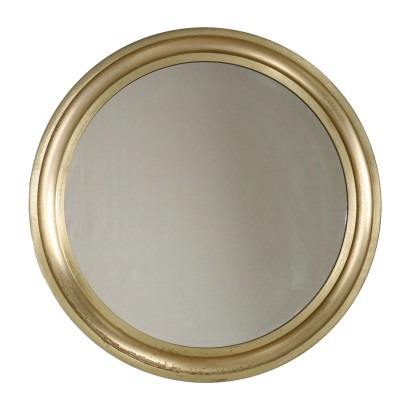E. Pastorio Oil on Canvas Italy XX Century
Features
Artist: Ezio Pastorio (1911-2006)
Artwork title: Paesaggio con scorcio di fiume
Age: 20th Century / 1901 - 2000
Subject: Landscape
Origin: Italy
Artistic technique: Painting
Technical specification: Oil on Canvas
Description : Paesaggio con scorcio di fiume
Oil painting on canvas. Signed lower right. A glimpse of a torrent is presented, which flows in the green countryside on the slopes of the mountains. The play of colors is suggestive, all in the ranges of green and blue. Ezio Pastorio, originally from Cremona but transplanted to Valseriana after his studies, is considered "a great Italian master of the 20th century, who knew how to renew the artistic language of the landscape while maintaining a strong link with 19th century painting". His production is post-impressionist in nature, especially in the large landscape production that depicts the Po and Bergamo plains, the Venetian lagoon and some Parisian glimpses, admired during some travels. In his works, Pastorio creates suggestive atmospheres using infinite ranges of colours, which harmonize and sometimes even contrast, but always presented as a transparency which annuls the static nature of the representation and with a delicacy which expresses his devout religiosity towards nature and the created. Coming from a private collection, the work is presented in a frame.
Product Condition:
Product in good condition, shows small signs of wear. We try to present the real state as fully as possible with photos. If some details are not clear from the photos, what is reported in the description will prevail.
Frame Size (cm):
Height: 46
Width: 54
Depth: 5,5
Artwork dimensions (cm):
Height: 32
Width: 40
Additional Information
Artist: Ezio Pastorio (1911-2006)
Born in Cremona in 1911, Ezio Pastorio studied in Naples at the Institute of Fine Arts and in Milan at the Brera Academy with Aldo Carpi. Starting in 1941 he frequented the Val Seriana and Clusone, where he moved to live and work, and here he met Arturo Tosi, Manzù and Funi and with them he established working relationships and friendships. The beginning of the exhibition activity dates back to 1938, while his first personal exhibition was in 1946 at the Galleria Santo Spirito in Milan, a gallery founded by himself together with some painter friends and managed with the critical collaboration of Borgese, Marussi, De Grada, Apollonius. He participated in the 1948 and 1950 editions of the Venice Biennale, and after that he exhibited in personal exhibitions in the most famous galleries in Rome, Florence and Milan. Between the seventies and eighties he participated in some important anthological exhibitions set up by cultural institutions in Paris, Milan, Clusone, Cremona. The artist's long itinerary is followed and commented on by illustrious critics. Illustrious names of critics have written about him, including Leonardo Borgese, Alberico Sala, Giuseppe Gorgerino, Mario Ghilardi and Mario Monteverdi. Ezio Pastorio died in Milan in 2006.
Age: 20th Century / 1901 - 2000
20th Century / 1901 - 2000
Subject: Landscape
Artistic technique: Painting
La pittura è l'arte che consiste nell'applicare dei pigmenti a un supporto come la carta, la tela, la seta, la ceramica, il legno, il vetro o un muro. Essendo i pigmenti essenzialmente solidi, è necessario utilizzare un legante, che li porti a uno stadio liquido, più fluido o più denso, e un collante, che permetta l'adesione duratura al supporto. Chi dipinge è detto pittore o pittrice. Il risultato è un'immagine che, a seconda delle intenzioni dell'autore, esprime la sua percezione del mondo o una libera associazione di forme o un qualsiasi altro significato, a seconda della sua creatività, del suo gusto estetico e di quello della società di cui fa parte.
Technical specification: Oil on Canvas
The oil painting is a painting technique using powder pigments mixed with bases in inert and oils. Other customers have searched:



